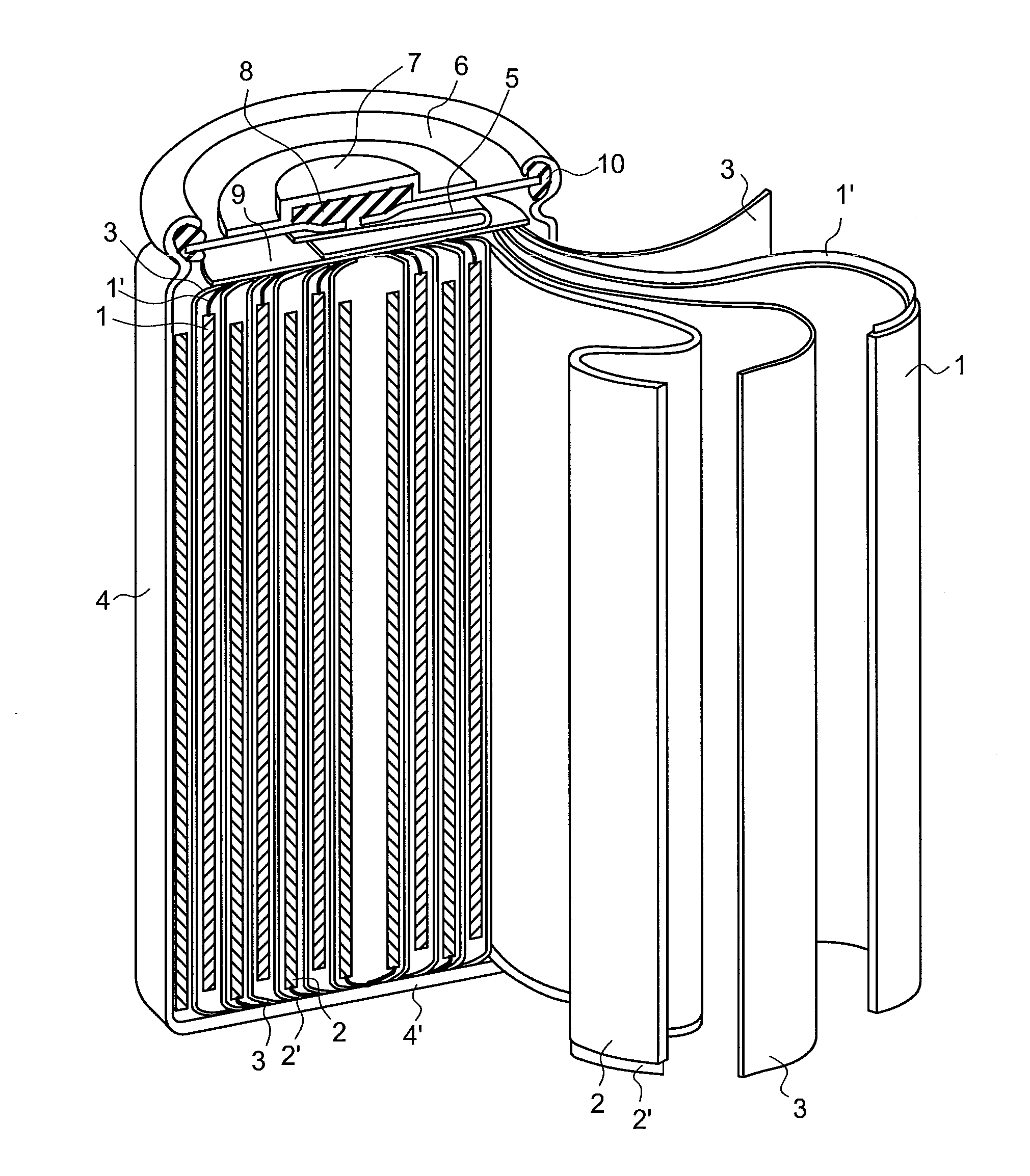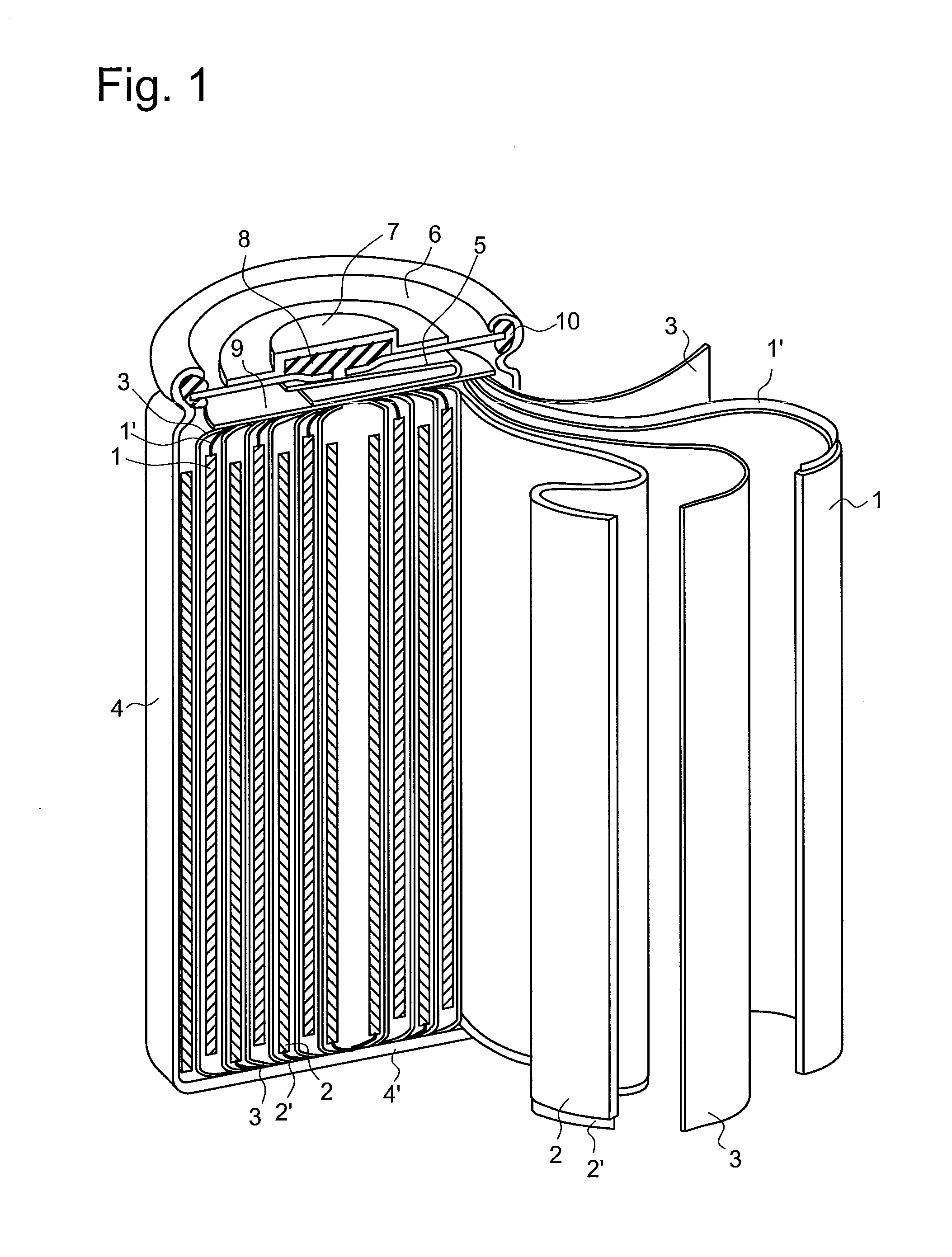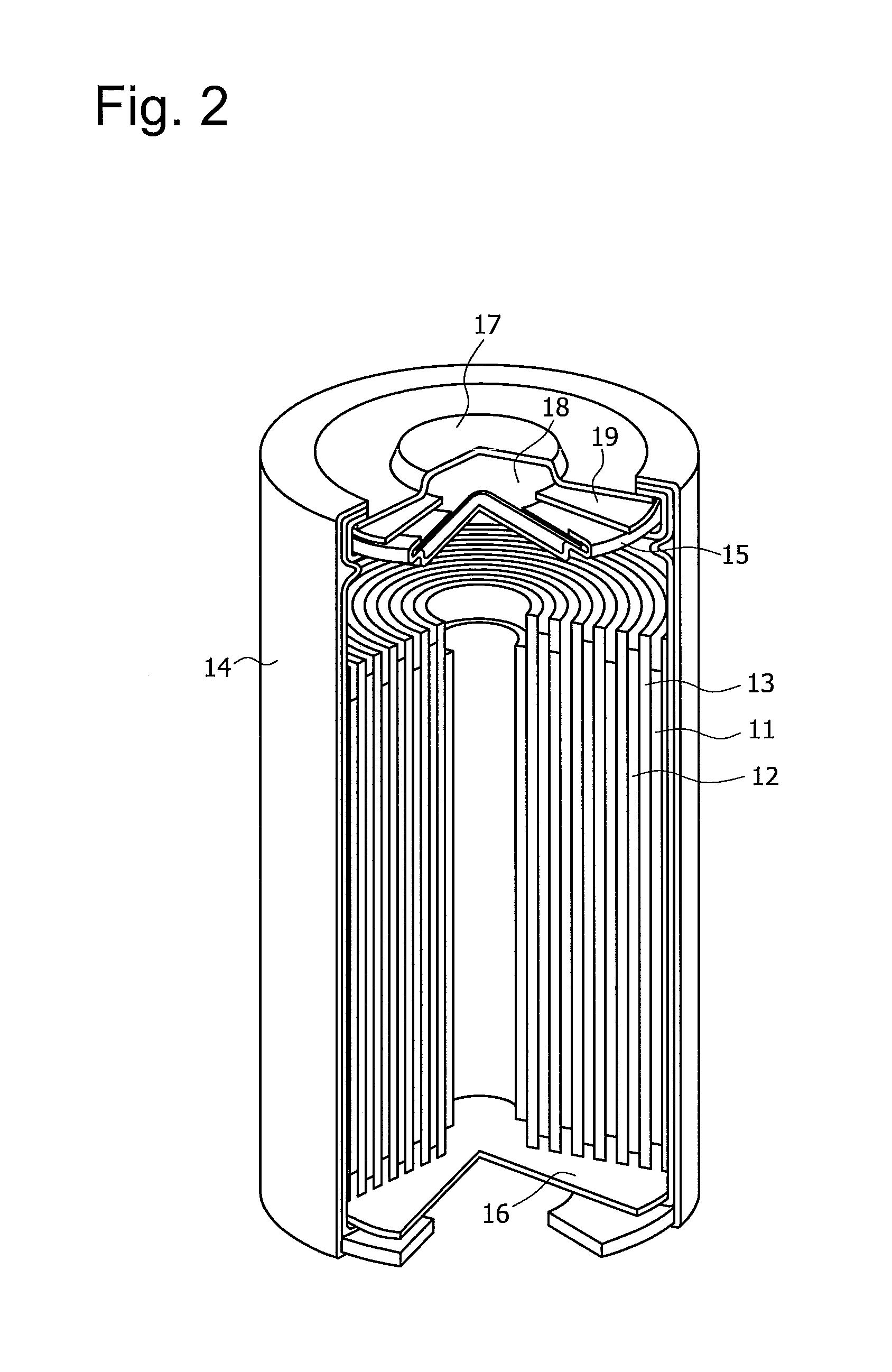Method for Manufacturing Metal-Made Three-Dimensional Substrate for Electrodes, Metal-Made Three-Dimensional Substrate for Electrodes and Electrochemical Applied Products Using the Same
a three-dimensional substrate and metal-made technology, applied in the manufacture of final products, cell components, basic electric elements, etc., can solve the problems of increasing the possibility of micro short circuit, increasing the energy density of batteries, and increasing the power consumption of batteries, so as to improve the high-rate discharge performance of electrodes and enhance the current collection capability of electrodes
- Summary
- Abstract
- Description
- Claims
- Application Information
AI Technical Summary
Benefits of technology
Problems solved by technology
Method used
Image
Examples
example 1
[0058]A nickel-made three-dimensional substrate (3DF) was prepared by using a pair of the rollers 21 and 22 as illustrated in FIGS. 4a to 4d, three-dimensionally processing a nickel foil (having a thickness before processing of 25 μm) so that the space between the adjacent hollow convex portions 31 (hollow concave portions 32) is approximately 700 μm, and further passing the foil between a pair of rollers having a flat surface (not illustrated) to be adjusted to a desirable apparent thickness (400 μm: A-type, 300 μm: B-type). The obtained three-dimensional substrate has innumerable wrinkles 40 on the side surfaces of the hollow convex portion and hollow concave portion.
[0059]The paste obtained by kneading a powder mixture having a weight ratio of generally used nickel hydroxide (Ni(OH)2) powder to cobalt oxide powder of 96:4 with an aqueous solution of fluorine resin powder (1 wt. %) and carboxymethyl cellulose (0.3 wt. %) was coated onto the A-type three-dimensional substrate. Afte...
example 2
[0076]An aluminum-made three-dimensional substrate and copper-made three-dimensional substrate were prepared by using a pair of the rollers 21 and 22 as described in FIGS. 4a and 4b, three-dimensionally processing an aluminum (Al) foil having a thickness of 15 μm and a copper (Cu) foil having a thickness of 10 μm so that a space between the adjacent hollow convex portions 31 (hollow concave portions 32) is approximately 700 μm, further passing each of the foils between a pair of rollers having a flat surface (not illustrated) to be adjusted to a desirable thickness (each apparent thickness of about 150 μm). These substrates functioned as electrode substrates for positive and negative electrodes, respectively.
[0077]By using these substrates, an AA-sized battery of the LiCoO2 / C system was prepared. FIG. 2 shows a structure of the AA-sized cylindrical lithium-ion battery using the three-dimensional substrate mainly made of aluminum as the positive electrode and the three-dimensional su...
PUM
| Property | Measurement | Unit |
|---|---|---|
| angle | aaaaa | aaaaa |
| angle | aaaaa | aaaaa |
| angle | aaaaa | aaaaa |
Abstract
Description
Claims
Application Information
 Login to View More
Login to View More - R&D
- Intellectual Property
- Life Sciences
- Materials
- Tech Scout
- Unparalleled Data Quality
- Higher Quality Content
- 60% Fewer Hallucinations
Browse by: Latest US Patents, China's latest patents, Technical Efficacy Thesaurus, Application Domain, Technology Topic, Popular Technical Reports.
© 2025 PatSnap. All rights reserved.Legal|Privacy policy|Modern Slavery Act Transparency Statement|Sitemap|About US| Contact US: help@patsnap.com



